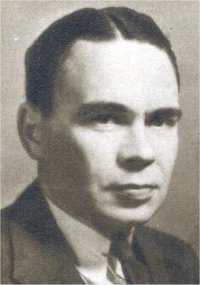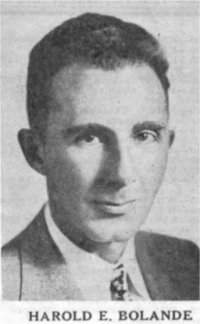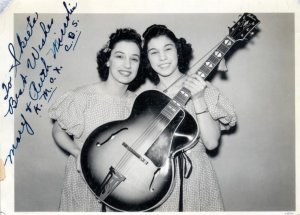Radio Articles
Voice of St. Louis to be Heard from New Studio Soon
The new $250,000 studios of Radio Station KMOX, the Voice of St. Louis, which are now being constructed in the New Mart Building, are rapidly nearing completion. When finished these studios will be the most modern in the country and will be equipped with every new device that will afford better mechanical operation as well as the latest in studio construction and acoustical treatment. The construction of these new studios was made necessary thru (sic) the increased number of programs originated by KMOX, it is reported, and to afford studio facilities comparable to the new 50,000 watt transmitter completed last year at a cost of approximately $450,000.
The increased facilities will enable KMOX to originate many chain features of national importance for the Columbia Chain of which it is a member because of its central location and tremendous power. The equipment and studios have been so arranged and so constructed that it will be possible for KMOX to broadcast a local program, send another program to Eastern cities and at the same time send still another to the Pacific coast. The layout has been designed and constructed so that with the advent of television it will not be necessary to alter the studios or the mechanical control arrangements.
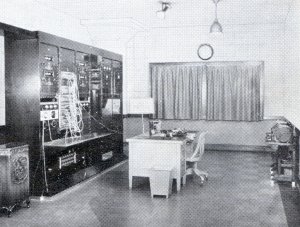
Five Separate Studios
The facilities which occupy two floors of the Mart Building will be the finest of any radio station in the country. There are five large studios, four of which extend two floors in height. Studio “A” which is the largest is 42 feet long and 22 feet wide and directly faces an auditorium which seats over 600 people.
The studio has been designed and constructed so that it will be used for the television productions of the future. Studio “C” is also enormous in size, being 41 feet long by 25 feet wide. This studio is of sufficient size to permit broadcast of the largest of symphony orchestras. The other three studios are approximately 28 x 25 feet, all facing a long corridor that extends from the entrance the complete length of the five studios. The studio fronts are large plate glass windows, permitting the guests of the station to watch the radio performers in action. The corridor will be elaborately furnished for the comfort of visitors.
A unique construction feature of the studios is its special acoustical treatment. The walls are nine inches thick with over four inches of a new scientific sound proofing material in the center. Over all this is a layer of special material which completely prevents tone distortion and unwanted sound reflection. The floors are also treated in a like manner. Underneath the top flooring is a thick layer of special padding which deadens sounds and prevents vibrations of the building from being transferred into the studios. The ceilings are similarly treated, with the exception that there is a space of nine inches between the ceiling of the building and ceilings of the studios which is filled with a special limestone preparation for acoustical perfection.
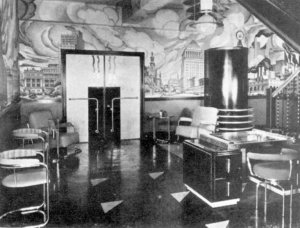
Finest Electrical Equipment
The third floor arrangement is similar to the second. There will be a large reception room which extends the full length of the five studios. From this reception corridor one may look down into the studios and watch the artists broadcasting. This corridor will also be furnished with lounges, chairs and other home-like furniture for the use of guests. On the third floor will be a large audition room where programs which are being rehearsed may be heard. This room will also be used so that clients of the station may hear programs which they are considering using for advertising purposes. This audition room will be used, too, for business conferences and meetings of the executives of the “Voice of St. Louis.”
The electrical equipment will be the finest of any studio in the country. Each of the studios has its own individual control room which is octagonal in shape, covered with glass and raised two feet above the studio floor level to afford a better view to the radio engineer who is operating the mechanical end of the broadcast. Each of the control rooms is equipped so that in an emergency it can be used as the master control.
The business offices of KMOX will be located on the third floor. They are large and spacious and equipped with a speaking system that will enable the hearing of any program which is being broadcast or rehearsed in any of the studios.
(Originally published in Radio and Entertainment 10/3/1931.)
